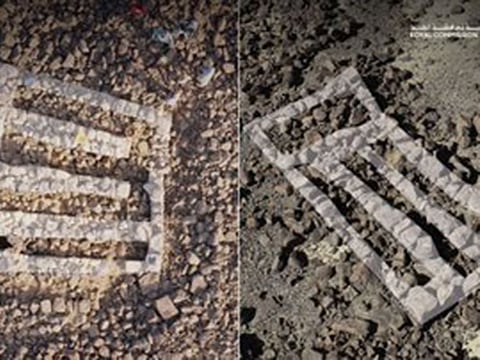Watch: Bronze age urban centre unearthed in Saudi Arabia
Named Al Natah, town thrived between 2400BC and 1300BC, housing up to 500 inhabitants

Dubai: Archaeologists have discovered a Bronze Age town in the Khaybar Oasis, located in northwestern Saudi Arabia, providing new insights into the ancient urban landscapes of the region.
The discovery was revealed on Saturday at a press event organised by the Royal Commission for AlUla (RCU) at the Saudi Press Agency's conference centre in Riyadh.
Named Al Natah, the town thrived between 2400BC and 1300BC, featuring an area of 2.6 hectares and housing up to 500 inhabitants. This finding challenges the longstanding view that nomadic and pastoral lifestyles predominated the region during the early and middle Bronze Age, instead presenting evidence of a structured, urban society with established agriculture, trade, and social systems.
The excavation, part of the Khaybar Longue Durée Archaeological Project, was led by Dr. Guillaume Charloux from the French National Centre for Scientific Research and Dr. Munirah AlMushawh of the RCU.
Protected settlement
Their work illustrates a significant transition in the socio-economic structures of northwestern Arabia, showing that Khaybar served as a crucial urban center that maintained community stability through advanced farming and commercial practices.
In addition to its urban layout featuring residential and funerary areas, Al Natah was fortified with a 15m-long stone wall, highlighting its importance as a protected settlement. The strategic planning and complex societal structures uncovered at the site add a new dimension to our understanding of Bronze Age civilizations in the Arabian Peninsula.
The findings from this site have been published in the peer-reviewed journal PLOS ONE and were a focal point at the recent AlUla World Archaeology Symposium 2024, themed "Moving Forward: Past, Present, and Future in the Archaeology and Heritage of Mobile Communities."
The ongoing excavations at Khaybar are expected to provide further insights into the lives of the people who once thrived in this desert oasis, enhancing our understanding of their contributions to the historical and cultural fabric of the region.
Sign up for the Daily Briefing
Get the latest news and updates straight to your inbox

![An aerial view shows Kingdom Tower in the Saudi capital Riyadh. [Illustrative image]](http://media.assettype.com/gulfnews%2Fimport%2F2020%2F05%2F26%2FSaudi-Riyadh_172500ec388_large.jpg?w=320&auto=format%2Ccompress&fit=max)

